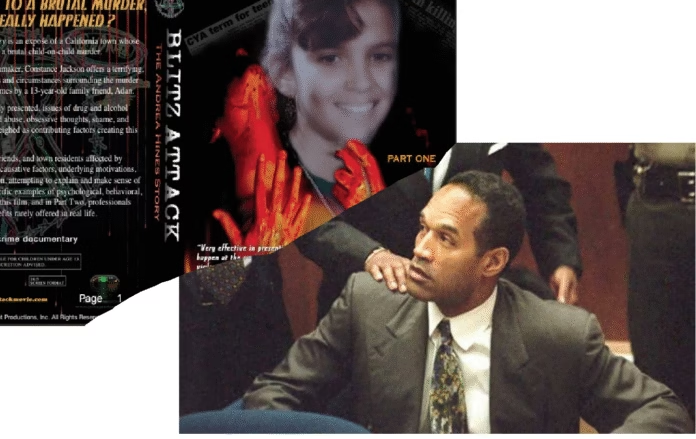What Holtville, CA Hid While America Watched O.J.
Thirty-one years ago today, Nicole Brown Simpson and Ronald Goldman were brutally murdered — a crime that shocked the nation and launched a media frenzy. Race, class, celebrity, and spectacle collided on live television as the white Bronco chase unfolded. With it, the American public was swept into a drama that revealed our deepest social fissures of racism and classism. But amid the chaos and obsession with O.J. Simpson’s trial, other lives lost to equally horrifying violence faded into the background.
One such case is that of Andrea Hines.
Just a few months after Nicole and Ronald’s deaths, Andrea — a teenage girl from Holtville, California — was found face down in her backyard. Her throat had been slashed; her body, stabbed repeatedly. Her father discovered her body shortly after the family returned from a local bar in celebration of a high school football game. The local media in Hotville dubbed the killing an O.J. Simpson Copycat murder.
There were chilling parallels to the Simpson-Goldman killings — the slashed throat, the frenzied violence — but beyond that, the stories diverged. Nicole Brown Simpson had become a national symbol, while Andrea Hines remained largely unknown to most. She lived and died in a quiet agricultural town near the U.S.-Mexico border, a place that took pride in its faith, football, and safety. But Andrea’s death shattered that illusion.
In 2005, filmmaker Natoma Lillie Keita — formerly Constance L. Jackson — released The Blitz Attack: The Andrea Hines Story. Keita, known for her socially conscious work exploring race, justice, and public health, turned her camera toward Holtville. This town, 15 miles from the border, could have been any rural American town, with its neat rows of houses and Friday night lights — but beneath its wholesome image, Keita uncovered something darker: a rising tide of opioid addiction, domestic violence, and communal silence.
The film centers not only on Andrea’s murder but on the boy accused, charged, and convicted of killing her: 13-year-old Adan Garcia, a family friend described as both gifted and troubled. Obsessed with O.J. Simpson, Adan was a voracious reader of Stephen King, a Dungeon Master in Dungeons & Dragons, and a student in a GATE program. But he also battled ADHD, clashed with authority, and displayed troubling signs of emotional disturbance.
Keita interviewed the families of both the victim and the accused, along with teachers, neighbors, and friends, to piece together a complex, often contradictory narrative. What began as a portrait of grief evolved into a deeper investigation of the social and familial conditions that allowed violence to flourish — and to be ignored.
In one interview after the next, Keita unflinchingly exposed the relationship dynamics between the Garcias and Hines that will leave the viewer questioning the identity of the victims and perpetrator in Andrea’s murder.
Through these conversations, the film challenges the notion of a single truth. Within the Hines family alone, perspectives diverged. And as Keita dug deeper, the official story became less certain. The Blitz Attack does not offer easy answers; instead, it forces viewers to confront uncomfortable questions about accountability, community, and what we choose to see—or not see—in the aftermath of tragedy.
Keita’s film is not just about one girl’s murder. It is a haunting exploration of a town in denial and a country still struggling to reckon with the violence it buries beneath headlines and spectacle.
As we mark the anniversary of Nicole Brown Simpson’s death, it’s worth remembering that for every high-profile case that captures the national imagination, there are others — like Andrea Hines — whose stories remain in the shadows. And sometimes, the silence around them speaks the loudest.
Visit https://permproductions.com to see the documentary films Blitz Attack: The Andrea Hines Story and Blitz Attack: The Andrea Hines Story II, Revelations, to see the final conclusion and aftermath of the murder of Andrea Hines.



